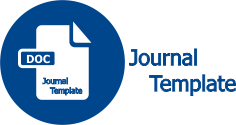Pengembangan Multimedia Interaktif pada Materi Hidrolisis dalam Model Discovery Learning
(1) Universitas Negeri Makassar
(2) Universitas Negeri Makassar
(3) Universitas Negeri Makassar
(*) Corresponding Author
DOI: https://doi.org/10.26858/cer.v5i1.26358
Abstract
Full Text:
PDFReferences
Dalgarno, Barney, Gregor Kennedy, dan Sue Bennett. (2014). “The impact of students’ exploration strategies on discovery learning using computer-based simulations.” Educational Media International, 51.
De Jong, Ton, dan Wouter R. Van Joolingen. (1998). “Scientific Discovery Learning with Computer Simulations of Conceptual Domains.” Review of Educational Research, 68(2), 179-201.
Dwiranata, Doni, Dewi Pramita, dan Syaharuddin Syaharuddin. (2019). “Pengembangan Media Pembelajaran Matematika Interaktif Berbasis Android Pada Materi Dimensi Tiga Kelas X SMA.” Jurnal Varian, 3(1), 1-5.
Fatmala, Diyan, dan Upik Yelianti. (2016). “Pengembangan Media Pembelajaran Multimedia Interaktif Berbasis Android Pada Materi Plantae Untuk Siswa SMA Menggunakan Eclipse Galileo.” BIODIK, 2(1).
Huseyin, Ozcinar, Wong Gary, dan Ozturk Tugba H. (2017). Teaching Computational Thinking in Primary Education. United States of America: IGI Global.
Kaharuddin, Andi. (2020). Pembelajaran Inovatif & Variatif. Pusaka Almaida.
Kurniawati, Inung Diah, dan Sekreningsih Nita. (2018). “Media Pembelajaran berbasis Multimedia Interaktif untuk Meningkatkan Pemahaman Konsep Mahasiswa.” DoubleClick: Journal of Computer and Information Technology, 1(2), 68-75.
Kustandi, Cecep, dan Daddy Darmawan. (2020). Pengembangan Media Pembelajaran: Konsep & Aplikasi Pengembangan Media Pembelajaran bagi Pendidik di Sekolah dan Masyrakat. Jakarta: Prenada Media.
Kuswanto, Joko, dan Ferri Radiansah. (2018). “Media Pembelajaran Berbasis Android” Jurnal Media Infotama, 14(1).
Lestari, Novia. (2019). Media Pembelajaran Berbasis Multimedia Interaktif. Klaten: Penerbit Lakeisha.
Limbong, Tonni, dan Janner Simarmata. (2020). Media dan Multimedia Pembelajaran: Teori & Praktik. Medan: Yayasan Kita Menulis.
Lubis, Arina Luthfini, Nizwardi Jalinus, Rijal Abdullah, dan Asmar Yulastri. (2021). Cooperative-Project Based Learning di SMK Ibnu Sina Batam. Penerbit Qiara Media.
Mahoney, Dawn. (2018). Lean Learning Using the ADDIE Model. United States of America: American Society for Training and Development.
Muyaroah, Siti, dan Mega Fajartia. (2017). “Pengembangan Media Pembelajaran Berbasis Android dengan menggunakan Aplikasi Adobe Flash CS 6 pada Mata Pelajaran Biologi.” Innovative Journal of Curriculum and Educational Technology, 6(2), 79-83.
Nazar, Muhammad, Zulfadli, Anggi Oktarina, dan Kana Puspita. (2020). “Pengembangan Aplikasi Pembelajaran Interaktif Berbasis Android untuk Membantu Mahasiswa dalam Mempelajari Materi Larutan Elektrolit dan Nonelektrolit.” Jurnal Pendidikan Sains Indonesia, 8(1), 39-54.
Octavia, Shilphy A. (2020). Model-Model Pembelajaran. Sleman: Deepublish.
Pribadi, Benny A. (2016). Desain dan Pengembangan Program Pelatihan Berbasis Kompetensi Implementasi Model ADDIE. Jakarta: Kencana.
Rayanto, Yudi Hari, dan Sugianti. (2020). Penelitian Pengembangan Model ADDIE dan R2D2: Teori dan Praktek. Pasuruan: Lembaga Academic & Research Institute.
Rieber, Lloyd P., Shyh-Chii Tzeng, dan Kelly Tribble. (2004). “Discovery Learning, Representation, and Explanation within a Computer-Based Simulation: Finding the Right Mix.” Learning and Instruction, 14(3), 307-323.
Susana, Afria. (2019). Pembelajaran Discovery Learning menggunakan Multimedia Aktif. Bandung: Tata Akbar.
Wibawanto, Wandah. (2020). Laboratorium Virtual Konsep dan Pengembangan Simulasi Fisika. Semarang: Penerbit LPPM UNNES.
Article Metrics
Abstract view : 246 times | PDF view : 71 timesRefbacks
- There are currently no refbacks.
Jurnal dipublikasikan oleh: Program Studi Pendidikan Kimia
Program Pascasarjana Universitas Negeri Makassar
Alamat JL. Bonto Langkasa Gunung Sari Makassar, 90222
Kampus PPs UNM Makassar Gedung AD ruang 406 Lt 4, Indonesia.Phone 082393643737/085145825311/085242228678
CER UNM Indexed by:

Chemistry Education Review (CER) is licensed under a Creative Commons Attribution-NonCommercial 4.0 International License.










